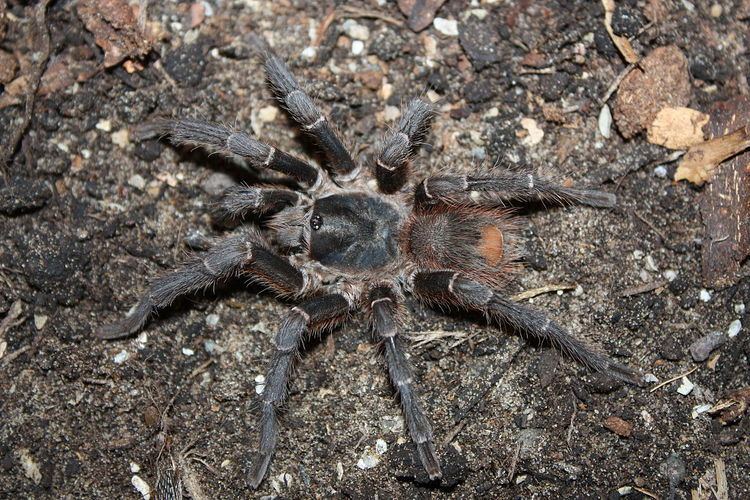Kingdom Animalia Class Arachnida Family Theraphosidae | Phylum Arthropoda Order Araneae Genus Acanthoscurria | |
 | ||
The tarantula spider Acanthoscurria brocklehursti, was a species described by F. O. Pickard-Cambridge (1896). It is now no longer valid, as following revision by Paula et al. it is now treated as a junior synonym Acanthoscurria theraphosoides (Doleschall, 1871)[in Ausserer 1871].
F. O. Pickard-Cambridge (1896) collected a mature female as his reference specimen (holotype) for this species during his trip to the Lower Amazon, specifically in Pará state, Brazil. The specimen was deposited in the Natural History Museum, London. F. O. Pickard-Cambridge (1896) states from his own live observations as having "Carapace deep brown, clothed with grey-brown velvety pubescence" and "legs entirely clothed with rich chocolate-brown pubescence and long scattered rufous hairs." (p.739)
In the exotic pet hobby, there is another larger species often mistakenly traded under this name Acanthoscurria brocklehursti with alternating light and dark banding on the legs. It is sometimes called the giant black and white tarantula because it can reach a leg span of 18–23 cm (7–9 in). Scientifically, this is a thinner banded regional variant of Acanthoscurria geniculata, also from the Amazon Basin.
Acanthoscurria are terrestrial spiders, naturally found in wide deep burrows, but often do not burrow in captivity. The hobby species will thrive within a temperature range of around 80 °F (27 °C) to 85 °F (29 °C), and a humidity range of 50 to 80%.
